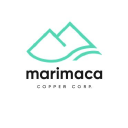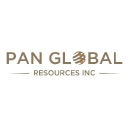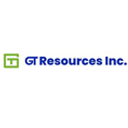Navigating the Copper Investment Landscape & Understanding the Macro Drivers

The global copper market is on the cusp of a significant transformation, driven by the increasing demand from the renewable energy sector, electric vehicles (EVs), and infrastructure development. As the world accelerates its transition towards a low-carbon economy, copper's unique properties, including its excellent electrical conductivity, heat transfer capabilities, and durability, make it an indispensable component in clean energy technologies. This comprehensive report aims to provide investors with an in-depth analysis of the copper market outlook, highlighting key trends, challenges, and opportunities that will shape the industry in the coming decades.
Demand Outlook
Copper demand is expected to be underpinned by three key trends: decarbonization, industrial and regional migration, and an increase in the use of scrap relative to cathode. The rapid uptake of copper-intensive clean technologies, such as wind and solar power, EVs, and related infrastructure investments, will complement the conventional end-use demand from construction, electrical networks, and consumer goods.
Decarbonization and Electrification
The global push towards decarbonization and electrification will be a significant driver of copper demand in the coming years. Governments worldwide are setting ambitious targets to reduce greenhouse gas emissions and increase the share of renewable energy in their power generation mix. This shift will require substantial investments in wind and solar power installations, as well as upgrades to electricity grids to accommodate the intermittent nature of renewable energy sources. Copper's superior electrical conductivity makes it crucial for these applications, with renewable energy projects requiring up to 12 times more copper than conventional power generation.
The transportation sector is also undergoing a rapid transformation, with EVs gaining market share at an accelerating pace. EVs require significantly more copper than traditional internal combustion engine vehicles, with a battery-electric vehicle containing up to 183 pounds of copper, compared to 18-49 pounds in a conventional car. As EV adoption rates continue to rise, driven by government incentives, falling battery costs, and increasing consumer awareness, the demand for copper in the automotive sector is set to soar.
Regional Demand Dynamics
Due to moderating urbanisation and population growth, China, the world's largest copper consumer, is expected to experience slower demand growth in the coming decades due to moderating urbanization and population growth. However, the country's ambitious decarbonization efforts and 2060 carbon neutrality target will continue supporting copper demand. China's plan to install 1,200 GW of wind and solar capacity by 2030 and increase the share of non-fossil fuel consumption to over 80% by 2060 will drive significant investments in renewable energy infrastructure and related copper consumption.
Meanwhile, industrial migration and domestic policies promoting end-use manufacturing will increase the demand for copper in developing Asia, particularly in ASEAN countries and India. Lower production costs and the growing size of domestic end-use markets make these regions attractive for manufacturing investments, including copper-intensive industries such as electrical and electronic equipment, automotive components, and consumer appliances. Government initiatives, such as India's "Make in India" program and production-linked incentive schemes, will further support the growth of copper-consuming industries in these regions.
Developed economies will still contribute to the overall demand picture while experiencing slower copper demand growth due to ageing populations and mature infrastructure. The focus on decarbonization and the replacement of aging infrastructure will generate additional copper consumption in these markets. The United States, for example, has recently passed significant legislation, such as the Infrastructure Investment and Jobs Act and the Inflation Reduction Act, which will drive investments in clean energy, EVs, and infrastructure modernization, all of which will boost copper demand.

Scrap and Recycling
The increasing use of copper scrap and the growing emphasis on recycling will play a crucial role in meeting the rising demand for copper while supporting the circular economy. Copper's infinite recyclability without losing quality makes it an ideal material for the circular economy. The share of scrap in total copper consumption is expected to rise significantly, from around 30% in 2023 to nearly 40% by 2030 and over 50% by 2050.
The growing availability of scrap, driven by the increasing volume of copper-containing products reaching the end of their life span, will support this trend. Governments and industries also focus on improving scrap collection and sorting infrastructure to facilitate higher recycling rates. The use of scrap not only helps to meet the growing demand for copper but also reduces the environmental footprint of copper production, as recycling requires significantly less energy than primary production from mined ore.
Supply Outlook
The global copper mining industry faces significant challenges in meeting the projected demand growth, with the development of new projects hindered by geopolitical risks, environmental concerns, and social governance issues.
Near-term Supply Growth
Global copper mine production is expected to grow at a modest pace in the near term, supported by the ramp-up of recently commissioned projects and the completion of expansions at existing operations. Notable projects contributing to near-term growth include Quebrada Blanca and Mantoverde in Chile, and expansions at Kamoa-Kakula and Tenke Fungurume in the Democratic Republic of Congo (DRC).
However, the copper mining industry is grappling with a range of operational and external challenges that could limit near-term supply growth. These include declining ore grades, deeper deposits, water scarcity, and the increasing complexity of mining operations. Technical issues, project delays, and social unrest have also impacted production at several major mines in recent years, highlighting the vulnerability of copper supply to disruptions.
Long-term Supply Challenges
To meet the projected long-term demand growth, the copper mining industry needs to develop new projects at a rate of approximately 670 ktpa (thousand tonnes per annum), slightly below the average of 790 ktpa sanctioned between 2019 and 2023. The current supply gap is estimated at around 4.75 Mt (million tonnes) by 2034, and without sufficient project development, the market could face significant supply deficits in the coming decades.
Latin America, which accounts for 40% of current copper production, will continue to play a crucial role in meeting future demand. However, the region faces uncertainties related to changes in mining taxes, royalties, and permitting regulations, particularly in Chile and Peru. While Latin America has a significant project pipeline, with around 20% of probable projects and 50% of possible projects by 2034, the development hurdles remain high. Social conflicts, environmental concerns, and political instability pose risks to the timely development of new projects in the region.
Other jurisdictions, such as the United States, Mongolia, and the African Copperbelt, also have promising copper projects but face various challenges. In the United States, the lengthy permitting process and environmental regulations have delayed the development of several major copper projects. Mongolia's Oyu Tolgoi underground expansion, one of the world's largest copper projects, has faced delays and cost overruns due to technical challenges and disagreements between the government and the mining company.
The African Copperbelt, spanning the DRC and Zambia, has seen rapid production growth recently, with several new projects coming online. However, the region's long-term growth potential is constrained by infrastructure limitations, including inadequate power supply and transportation networks. Political instability and changes to mining regulations also pose risks to regional project development.
Exploration and Technology
To bridge the projected supply gap, the copper mining industry must invest in exploration to discover new deposits and advance early-stage projects. However, exploration spending has been relatively low in recent years, as mining companies focused on cost-cutting and capital discipline after the commodity price downturn in the mid-2010s.
Technological advancements in exploration, mining, and processing could help to unlock additional copper supply and improve the economics of marginal projects. Innovations in data analytics, remote sensing, and machine learning are enabling more targeted and efficient exploration efforts. In mining, automation and digitalization are helping to optimize operations, reduce costs, and improve safety. Advanced processing technologies, such as bio-leaching and ore sorting, could enable the economical extraction of copper from lower-grade and complex ores.
However, adopting new technologies in the mining industry has been relatively slow to adopt new technologies, hindered by high upfront costs, the need for specialized skills, and the sector's inherent conservatism. Overcoming these barriers and accelerating the deployment of innovative solutions will be crucial to meeting the long-term copper supply challenge.
Price Outlook
The interplay between the growing demand for copper and the challenges in developing new supply is expected to support copper prices in the long term. The market's long-term average copper price forecast has been revised upwards to US$5/lb in constant 2024 US dollars, reflecting the higher embedded costs due to increased environmental, social, and governance (ESG) commitments and the need for greater economies of scale to offset declining ore grades and rising input costs.
Near-term Price Dynamics
In the near term, copper prices will remain elevated due to the anticipated weakness in mine supply growth in 2024 and robust demand growth. The modest copper supply deficit projected for 2024 is likely to be much larger, with metal stocks in terms of days of consumption expected to fall below the long-term average of 65 days. This tight supply-demand balance should underpin higher annual average copper prices in 2024 and over the medium term.
As new projects come online and supply growth accelerates in 2025 and 2026, the market is expected to see a rebuilding of concentrate, blister, and refined metal inventories. This gradual improvement in supply, and concerns about the sustainability of demand growth, may put downward pressure on prices. However, the pace of the price correction will be moderated by the need to replenish historically low inventories and the persistent uncertainty surrounding the ability of mine supply to meet expectations.
Long-term Price Outlook
Over the longer term, copper prices are expected to remain above the historical average, supported by the market's structural deficit and the requirement for higher prices to incentivize the development of new supply. The revised long-term average price of US$5/lb is expected to be sufficient to close the projected supply gap and maintain a reasonable market balance over the next decade.
However, there are risks to this outlook, both to the upside and downside. On the upside, a faster-than-expected recovery in global economic growth, coupled with an acceleration in the energy transition and the adoption of clean technologies, could lead to stronger demand growth and tighter market balances, pushing prices higher. On the downside, a prolonged economic slowdown, geopolitical tensions, or a slower-than-anticipated uptake of EVs and renewable energy could weigh on demand growth and result in a more balanced market, putting downward pressure on prices.
Risks and Opportunities
The copper market faces various risks and opportunities that could impact the demand, supply, and price outlook presented in this article
Demand-side Risks
- Geopolitical tensions and trade disputes: Escalating geopolitical tensions and trade disputes, particularly between major economic powers such as the United States and China, could disrupt global supply chains, slow economic growth, and dampen copper demand.
- Slower-than-expected adoption of clean energy technologies: If the uptake of EVs, renewable energy, and other clean technologies falls short of expectations due to policy changes, technological barriers, or consumer preferences, copper demand growth could be weaker than projected.
- Substitution and thrifting: Higher copper prices could incentivize the substitution of copper with alternative materials, such as aluminum, in certain applications or lead to thrifting (reduction in the amount of copper used) in end-use products, dampening demand growth.
Supply-side Risks
- Resource nationalism and political instability: Resource nationalism, including changes to mining taxes, royalties, and regulations, and political instability in major copper-producing countries, could delay or discourage investment in new projects and limit supply growth.
- Environmental and social challenges: Stricter environmental regulations, social opposition to mining projects, and increasing ESG scrutiny from investors could hinder the development of new copper mines and increase production costs.
- Operational and technical challenges: Operational issues, such as pit wall failures, equipment breakdowns, and labor disputes, as well as technical challenges related to the increasing complexity of mining operations, could disrupt supply and impact production volumes.
Opportunities
- Growing demand for clean energy technologies: The accelerating global transition towards a low-carbon economy and the increasing adoption of clean energy technologies, such as EVs and renewable power generation, present a significant growth opportunity for the copper market.
- Supply deficits and higher prices: The potential for supply deficits and elevated copper prices in the medium to long term could attract investment in new mining projects and drive innovation in exploration, mining, and processing technologies.
- Circular economy and recycling: The growing emphasis on the circular economy and the increasing use of copper scrap in production present opportunities for companies involved in recycling and secondary copper production.
- Technological advancements: Advancements in exploration, mining, and processing technologies could help unlock additional copper resources, improve operational efficiency, and reduce the environmental impact of copper production.
The global copper market is poised for significant growth in the coming decades, driven by the increasing demand for clean energy technologies, EVs, and infrastructure development. As the world accelerates its transition towards a low-carbon economy, copper's unique properties make it essential to realize this vision.
However, the copper mining industry faces significant challenges in meeting the projected demand growth, with the development of new projects hindered by geopolitical risks, environmental concerns, and social governance issues. To bridge the anticipated supply gap, the industry must invest in exploration, advance new projects, and adopt innovative technologies to improve operational efficiency and sustainability.
The interplay between the growing demand for copper and the challenges in developing new supply is expected to support copper prices in the long term. The market's long-term average price forecast has been revised upwards to reflect the higher costs and risks associated with copper production.
For investors, the copper market presents a compelling opportunity, underpinned by the structural shifts in the global economy towards decarbonization and electrification. However, investors must also be aware of the industry's risks and uncertainties, including geopolitical tensions, environmental and social challenges, and the potential for technological disruption.
To navigate this complex landscape and capitalize on the opportunities in the copper market, investors should:
- Monitor the progress of key copper mining projects and the development of new supply sources
- Assess the impact of geopolitical events, policy changes, and social and environmental issues on the copper market
- Track the adoption rates of clean energy technologies and the evolution of copper demand in key end-use sectors
- Evaluate the financial health, ESG performance, and growth strategies of copper mining and refining companies
- Consider exposure to companies involved in copper recycling and the circular economy
- Diversify investments across geographies and segments of the copper value chain to mitigate risks
By understanding the key drivers, challenges, and opportunities shaping the copper market, investors can make informed decisions and position themselves to benefit from the global transition towards a sustainable and electrified future.
Companies Likely to Benefit from the New Copper Paradigm
Marimaca Copper: Unlocking Value in Chile's Copper Sector
Marimaca Copper (TSX: MARI) is an emerging copper company focused on developing the highly prospective Marimaca Copper Project in Chile's renowned Antofagasta region. As the only significant copper discovery globally in the past five years, the Marimaca Project represents a unique investment opportunity, combining low risk with substantial exploration potential.
Investment Highlights:
- Strategic Location: The Marimaca Copper Project is situated in the low-elevation coastal belt, near Antofagasta and Mejillones. This prime location allows for developing a high-margin copper project with lower capital investment and reduced execution risk, owing to the proximity of existing infrastructure and utilities.
- Unique Geology: The Marimaca deposit is hosted by intrusive rocks, setting it apart from the numerous mantle deposits in the region, which are hosted by volcanics. This new type of deposit challenges conventional exploration wisdom and opens up new frontiers for discoveries in Chile.
- Significant Exploration Potential: Besides the Marimaca Copper Project, the Company is actively exploring multiple regional large-scale targets, including a potential new Iron Oxide Copper Gold (IOCG) district. This exploration upside offers investors exposure to potential future discoveries and resource growth.
- Experienced Management Team: Marimaca Copper is led by a seasoned management team with extensive experience in the Chilean mining sector. The team's exploration, development, and operations expertise positions the Company to advance the Marimaca Project and create value for shareholders successfully.
- Favorable Copper Market Outlook: Copper is a critical metal for the global energy transition, with increasing demand driven by the growth of renewable energy, electric vehicles, and infrastructure development. As a result, the long-term fundamentals for copper remain strong, supporting the investment case for Marimaca Copper.
With its high-quality asset, attractive location, and significant exploration potential, Marimaca Copper presents a compelling investment opportunity in the copper sector. As the Company advances the Marimaca Copper Project and explores for new discoveries, it is well-positioned to create substantial value for shareholders and stakeholders alike.
Hot Chili: Unlocking Value in Chile's Copper-Rich Costa Fuego Project
Hot Chili Ltd (ASX/TSXV: HCH, OTCQX: HHLKF) presents a compelling investment opportunity in the copper sector, as the company is well-positioned to capitalize on the anticipated structural deficit in the global copper market. With its flagship Costa Fuego project located in a highly accessible, low-elevation region of northern Chile, Hot Chili offers investors significant leverage to the copper price through its substantial, high-quality resource base.
Investment Highlights:
- World-Class Resource: Costa Fuego boasts an Indicated Resource of 2.8 Mt Copper, 2.6 Moz Gold, and 67 Kt Molybdenum (within 725Mt), and an Inferred Resource of 0.6 Mt Copper, 0.4 Moz Gold, and 13 Kt Molybdenum (within 202 Mt). The project is rated by S&P Global Market Intelligence (2022) as one of the top 10 "low risk" undeveloped copper projects globally.
- Strategic Location and Infrastructure: The Costa Fuego project benefits from its proximity to key infrastructure, including a significant port, seawater pipeline intake, major power substation, and the dual-lane Pan American Highway. This advantageous location enables the development of a low-risk, long-life copper project with reduced start-up capital requirements.
- Robust Economics: A recently released Preliminary Economic Assessment (PEA) confirms Costa Fuego's potential to deliver a high annual copper equivalent metal production profile of over 100 kt for a 16-year mine life, including 95 kt copper and 49 koz gold during primary production (first 14 years) at a competitive C1 Cash Cost of US$1.33/lb (estimated net of by-product credits).
- Experienced Management Team: Hot Chili is led by a seasoned management team with extensive experience in the copper mining industry, particularly in Chile and Latin America. The team's exploration, development, and operations expertise positions the company to successfully advance the Costa Fuego project and create value for shareholders.
- Exploration Upside: With an active drill program testing new targets, Hot Chili offers investors exposure to potential resource growth and new discoveries within its project portfolio.
- Improved Market Visibility: Hot Chili's recent secondary listings on the TSXV and OTCQX exchanges better align the company with its global copper peer group, increasing its visibility to a wider investor audience and potentially narrowing the valuation gap between large Australian copper developers and their North American listed peers.
As the market recognizes the looming structural deficit in copper and the higher prices required to incentivize new production, Hot Chili is well-positioned to benefit from its high-quality Costa Fuego project. With its substantial resource base, favorable location, robust economics, and experienced management team, the company offers investors a compelling opportunity to gain exposure to the copper sector and participate in the global energy transition.
Pan Global Resources: Unlocking Copper Potential in Spain's Prolific Iberian Pyrite Belt
Pan Global Resources Inc. presents a compelling investment opportunity for those seeking exposure to the growing demand for copper, driven by the global electrification and energy transition. The company's focus on copper-rich mineral deposits positions it to capitalize on the anticipated strong long-term copper prices and the critical role copper plays in the future of sustainable energy.
Investment Highlights:
- Strategic Location: Pan Global's flagship Escacena Project is situated in the renowned Iberian Pyrite Belt in southern Spain, a region known for its rich mineral endowment and mining history. The project benefits from excellent infrastructure, a supportive regulatory environment, and access to a highly skilled workforce.
- Tier-One Jurisdiction: Spain is recognized as a tier-one mining jurisdiction, with a favourable permitting track record and strong support for copper as a Strategic Raw Material by the European Commission. This supportive environment reduces development risk and enhances the project's long-term value potential.
- Robust Copper Fundamentals: Copper's compelling supply-demand fundamentals underpin Pan Global Resources' investment thesis. As global electrification and the energy transition accelerate, the demand for copper is expected to surge, while supply constraints are likely to support strong long-term prices.
- Experienced Management Team: Pan Global is led by a team of proven professionals with extensive experience in exploration, discovery, development, and mine operations. The team's track record of success and commitment to operational excellence, environmental stewardship, and community engagement instills confidence in the company's ability to deliver value to shareholders.
- Sustainable and Responsible Mining: As a member of the United Nations Global Compact, Pan Global operates under sustainable and responsible mining principles. The company's commitment to environmental, social, and governance (ESG) best practices aligns with the increasing focus on sustainability within the mining industry and among investors.
- Exploration Upside: The Escacena Project offers significant exploration upside, with the potential for further discoveries and resource growth. As Pan Global continues to advance the project and unlock its full potential, investors stand to benefit from the value creation associated with successful exploration and development.
With its strategic focus on copper, tier-one jurisdiction, experienced management team, and commitment to sustainable mining practices, Pan Global Resources offers investors a compelling opportunity to participate in the global energy transition. As the demand for copper continues to grow and the project advances, the company is well-positioned to create long-term value for shareholders.
GT Resources: Powering the Green Transportation Revolution
GT Resources Inc. (TSXV: GT) presents a compelling investment opportunity for those seeking exposure to the growing demand for critical Green Transportation Metals. As the world transitions towards cleaner and more sustainable transportation solutions, the demand for metals such as nickel, copper, palladium, platinum, and cobalt is expected to soar. GT Resources is well-positioned to capitalize on this trend, with a focus on discovering and developing district-scale deposits in Canada and Finland.
Investment Highlights:
- Green Transportation Metals: GT Resources' strategy is centered around discovering and producing critical metals essential for the green transportation revolution. These metals are vital components in electric vehicle batteries, fuel cells, and other clean energy technologies, ensuring a strong and growing market for the company's products.
- Diversified Portfolio: The company boasts a diversified portfolio of projects, including the Läntinen Koillismaa (LK) Project in Finland, which already has NI43-101 Mineral Resources, and the high-grade nickel-copper Tyko and Canalask projects in Ontario and the Yukon, Canada, respectively. This diversification reduces risk and provides multiple avenues for growth and value creation.
- Strategic Locations: GT Resources' projects are located in stable, mining-friendly jurisdictions with established infrastructure and a skilled workforce. These locations offer a favorable operating environment and reduce the risk of project delays or disruptions.
- Net-Zero Commitment: The company is committed to delivering Net-Zero Greenhouse Gas (GHG) emissions throughout the life cycle of its exploration, development, and mining activities and the metals it produces. This commitment aligns with the increasing focus on sustainability within the mining industry and among investors, positioning GT Resources as a responsible and forward-thinking company.
- Experienced Management: GT Resources is led by a team of experienced professionals with a proven mineral exploration, development, and mining track record. This expertise ensures that the company is well-equipped to navigate the challenges and opportunities presented by the rapidly evolving green transportation sector.
- Significant Upside Potential: As the demand for Green Transportation Metals continues to grow, driven by the global shift towards cleaner energy and transportation solutions, GT Resources is poised to benefit from rising metal prices and increased investor interest in the sector. The company's high-quality projects and strategic focus on critical metals provide significant upside potential for investors.
With its focus on critical Green Transportation Metals, diversified portfolio, strategic locations, and commitment to sustainability, GT Resources offers investors a unique opportunity to participate in the global transition towards cleaner transportation. As the company advances its projects and the demand for these essential metals continues to grow, GT Resources is well-positioned to create substantial value for its shareholders.
Analyst's Notes




Subscribe to Our Channel
Stay Informed



























